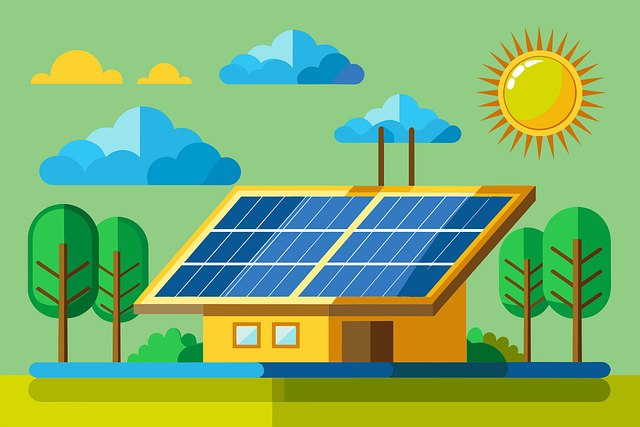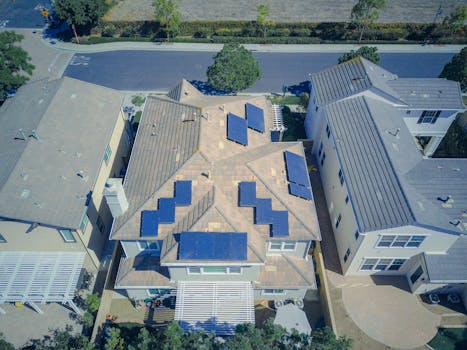“Maximize Efficiency, Minimize Downtime: Empowering Large-Scale Solar Farms with Real-Time Performance Monitoring.”
Solar performance monitoring for large-scale solar farms involves the systematic tracking and analysis of energy production and system efficiency to ensure optimal operation and return on investment. This process utilizes advanced technologies, including sensors, data analytics, and software platforms, to collect real-time data on various performance metrics such as energy output, weather conditions, and equipment health. By identifying inefficiencies, potential failures, and performance trends, operators can make informed decisions to enhance productivity, reduce downtime, and maximize the overall effectiveness of solar installations. Effective monitoring not only supports maintenance and operational strategies but also contributes to sustainability goals by ensuring that solar farms operate at their full potential.
Importance Of Solar Performance Monitoring In Large-Scale Solar Farms
In the rapidly evolving landscape of renewable energy, solar performance monitoring has emerged as a critical component for the success of large-scale solar farms. As the demand for clean energy continues to rise, the efficiency and reliability of solar installations become paramount. Solar performance monitoring serves as a vital tool in ensuring that these expansive systems operate at their optimal capacity, thereby maximizing energy production and minimizing operational costs.
One of the primary reasons for the importance of solar performance monitoring lies in its ability to provide real-time data on the performance of solar panels. By continuously tracking metrics such as energy output, temperature, and irradiance levels, operators can quickly identify any deviations from expected performance. This immediate feedback is crucial, as even minor inefficiencies can lead to significant losses over time. For instance, if a solar panel is underperforming due to shading, dirt accumulation, or equipment malfunction, timely intervention can restore its functionality and prevent further energy loss.
Moreover, solar performance monitoring plays a pivotal role in predictive maintenance. By analyzing historical performance data, operators can identify patterns and trends that may indicate potential issues before they escalate into costly failures. This proactive approach not only extends the lifespan of the solar equipment but also reduces downtime, ensuring that the solar farm remains productive. In essence, the ability to anticipate maintenance needs translates into substantial cost savings and improved return on investment.
In addition to enhancing operational efficiency, solar performance monitoring contributes to the overall sustainability of large-scale solar farms. By ensuring that each component of the system is functioning optimally, operators can maximize the amount of clean energy generated. This is particularly important in the context of global efforts to combat climate change, as every kilowatt-hour produced from renewable sources helps to reduce reliance on fossil fuels. Consequently, effective monitoring systems not only benefit individual solar farms but also support broader environmental goals.
Furthermore, the integration of advanced technologies such as artificial intelligence and machine learning into solar performance monitoring systems has revolutionized the way data is analyzed and utilized. These technologies enable operators to process vast amounts of data quickly and accurately, leading to more informed decision-making. For example, machine learning algorithms can predict future performance based on historical data, allowing operators to optimize energy production strategies and improve overall efficiency. This technological advancement underscores the importance of staying at the forefront of innovation in the renewable energy sector.
Another significant aspect of solar performance monitoring is its role in regulatory compliance and reporting. Many regions require solar farms to adhere to specific performance standards and environmental regulations. By maintaining comprehensive monitoring systems, operators can ensure compliance with these requirements, thereby avoiding potential fines and legal issues. Additionally, transparent reporting of performance data can enhance stakeholder confidence, attracting further investment and support for renewable energy initiatives.
In conclusion, the importance of solar performance monitoring in large-scale solar farms cannot be overstated. It serves as a cornerstone for operational efficiency, predictive maintenance, sustainability, and regulatory compliance. As the renewable energy sector continues to grow, the integration of advanced monitoring technologies will further enhance the performance and reliability of solar installations. Ultimately, effective solar performance monitoring not only benefits individual solar farms but also contributes to the global transition towards a more sustainable energy future.
Key Metrics For Evaluating Solar Farm Performance

Evaluating the performance of large-scale solar farms is crucial for ensuring their efficiency and profitability. To achieve this, several key metrics are employed, each providing insights into different aspects of solar energy production. One of the primary metrics is the Energy Yield, which measures the actual energy produced by the solar farm over a specific period compared to the expected energy output based on the solar resource available. This metric is essential because it helps identify any discrepancies between anticipated and actual performance, allowing operators to pinpoint potential issues such as equipment malfunctions or shading effects.
Another important metric is the Performance Ratio (PR), which is a dimensionless number that indicates the efficiency of a solar power plant. The PR is calculated by dividing the actual energy output by the theoretical energy output, taking into account factors such as temperature, irradiance, and system losses. A high PR value signifies that the solar farm is operating efficiently, while a low PR may indicate problems that need to be addressed. This metric is particularly useful for comparing the performance of different solar installations, as it normalizes the data against varying environmental conditions.
In addition to Energy Yield and Performance Ratio, the Capacity Factor is another critical metric for assessing solar farm performance. The Capacity Factor represents the ratio of actual output over a period to the maximum possible output if the system operated at full capacity continuously. This metric is particularly relevant for understanding how well a solar farm is utilizing its installed capacity. A higher Capacity Factor suggests that the solar farm is effectively harnessing available sunlight, while a lower factor may indicate underperformance due to factors such as equipment downtime or suboptimal site conditions.
Moreover, monitoring the degradation rate of solar panels is essential for long-term performance evaluation. Over time, solar panels experience a gradual decline in efficiency, typically around 0.5% to 1% per year. By tracking the degradation rate, operators can make informed decisions regarding maintenance, replacement, or upgrades to ensure sustained energy production. This metric not only helps in forecasting future energy yields but also plays a significant role in financial modeling and investment planning.
Furthermore, analyzing the availability of the solar farm is crucial for understanding its operational reliability. Availability is defined as the percentage of time the solar farm is operational and capable of generating electricity. High availability indicates that the system is functioning well, while low availability may signal issues such as maintenance needs or unexpected outages. By closely monitoring this metric, operators can implement proactive maintenance strategies to minimize downtime and maximize energy production.
Lastly, it is essential to consider the financial metrics associated with solar farm performance. Metrics such as Levelized Cost of Energy (LCOE) provide insights into the cost-effectiveness of energy production. LCOE represents the per-unit cost of building and operating a solar power plant over its lifetime, allowing stakeholders to assess the economic viability of the project. By combining technical performance metrics with financial indicators, operators can gain a comprehensive understanding of their solar farm’s performance and make data-driven decisions to enhance efficiency and profitability.
In conclusion, evaluating the performance of large-scale solar farms requires a multifaceted approach that incorporates various key metrics. By focusing on Energy Yield, Performance Ratio, Capacity Factor, degradation rates, availability, and financial metrics, operators can ensure that their solar installations are performing optimally, ultimately contributing to the broader goals of renewable energy generation and sustainability.
Technologies Used In Solar Performance Monitoring
In the realm of large-scale solar farms, the importance of solar performance monitoring cannot be overstated. As the demand for renewable energy continues to rise, the efficiency and reliability of solar installations have become paramount. To achieve optimal performance, various technologies have been developed and implemented to monitor solar energy systems effectively. These technologies not only enhance operational efficiency but also ensure that solar farms can meet their energy production targets.
One of the primary technologies employed in solar performance monitoring is the use of advanced data acquisition systems. These systems collect real-time data from various components of the solar farm, including solar panels, inverters, and weather stations. By integrating sensors and data loggers, operators can track key performance indicators such as energy output, temperature, and irradiance levels. This data is crucial for identifying trends and anomalies, allowing for timely interventions when performance dips below expected levels. Moreover, the ability to analyze historical data enables operators to make informed decisions regarding maintenance schedules and system upgrades.
In addition to data acquisition systems, remote monitoring technologies have revolutionized the way solar farms are managed. Utilizing cloud-based platforms, operators can access performance data from anywhere in the world. This accessibility not only facilitates real-time monitoring but also enhances collaboration among stakeholders. For instance, engineers can diagnose issues remotely, reducing the need for on-site visits and minimizing downtime. Furthermore, these platforms often incorporate advanced analytics and machine learning algorithms, which can predict potential failures before they occur, thereby optimizing maintenance efforts and reducing operational costs.
Another significant technology in solar performance monitoring is the use of thermal imaging cameras. These cameras detect temperature variations across solar panels, which can indicate underlying issues such as hot spots or faulty connections. By conducting regular thermal inspections, operators can identify and address problems that may not be visible to the naked eye. This proactive approach not only extends the lifespan of the solar panels but also maximizes energy production by ensuring that all components are functioning optimally.
Moreover, the integration of drone technology has emerged as a game-changer in the monitoring of large-scale solar farms. Drones equipped with high-resolution cameras and thermal imaging capabilities can quickly survey vast areas, capturing detailed images and data that would be time-consuming and labor-intensive to collect manually. This aerial perspective allows for comprehensive assessments of the solar farm’s condition, enabling operators to pinpoint issues such as shading from vegetation or structural damage. The efficiency and accuracy of drone inspections significantly enhance the overall monitoring process, ensuring that solar farms operate at peak performance.
As the solar industry continues to evolve, the role of artificial intelligence (AI) in performance monitoring is becoming increasingly prominent. AI algorithms can analyze vast amounts of data collected from various sources, identifying patterns and correlations that may not be immediately apparent. By leveraging predictive analytics, operators can optimize energy production forecasts and improve decision-making processes. This integration of AI not only enhances operational efficiency but also contributes to the overall sustainability of solar energy systems.
In conclusion, the technologies used in solar performance monitoring are essential for the successful operation of large-scale solar farms. From advanced data acquisition systems and remote monitoring platforms to thermal imaging and drone technology, these innovations work in tandem to ensure that solar installations perform at their best. As the industry continues to advance, the integration of AI and other emerging technologies will further enhance the capabilities of solar performance monitoring, paving the way for a more efficient and sustainable energy future.
Case Studies: Successful Solar Performance Monitoring Implementations
In the realm of renewable energy, solar performance monitoring has emerged as a critical component for optimizing the efficiency and output of large-scale solar farms. By examining successful case studies, we can glean valuable insights into how effective monitoring systems can enhance operational performance, reduce downtime, and ultimately contribute to the sustainability of solar energy as a viable power source.
One notable example is the implementation of a comprehensive monitoring system at the Mount Signal Solar project in California. This facility, which spans over 1,800 acres and boasts a capacity of 794 megawatts, faced the challenge of managing a vast array of photovoltaic panels. To address this, the project utilized advanced monitoring technologies that provided real-time data on energy production, equipment performance, and environmental conditions. By integrating these systems, operators were able to identify inefficiencies and potential issues before they escalated into significant problems. For instance, the monitoring system detected a drop in output from specific inverters, prompting immediate maintenance that ultimately minimized revenue loss. This proactive approach not only ensured optimal performance but also extended the lifespan of the equipment.
Similarly, the Solar Star project, one of the largest solar farms in the world, located in California, serves as another exemplary case of effective solar performance monitoring. With a capacity of 579 megawatts, Solar Star implemented a sophisticated monitoring platform that aggregated data from thousands of solar panels and inverters. This system enabled operators to analyze performance metrics across various parameters, including energy yield, temperature fluctuations, and shading effects. By employing predictive analytics, the team could forecast potential performance dips and schedule maintenance during off-peak hours, thereby maximizing energy production. The results were impressive; the farm consistently achieved high capacity factors, demonstrating the tangible benefits of a robust monitoring system.
In addition to these large-scale implementations, smaller solar farms have also reaped the rewards of effective performance monitoring. A case in point is a community solar project in Massachusetts that utilized a cloud-based monitoring solution. This system allowed stakeholders to access real-time data on energy generation and consumption, fostering transparency and engagement among community members. By providing insights into the performance of the solar array, the project not only enhanced operational efficiency but also educated the community about the benefits of solar energy. This participatory approach helped to build trust and support for renewable energy initiatives, showcasing how performance monitoring can extend beyond technical benefits to foster community involvement.
Moreover, the integration of artificial intelligence and machine learning into solar performance monitoring is paving the way for even greater advancements. For instance, a pilot project in Australia employed AI algorithms to analyze historical performance data and weather patterns, enabling predictive maintenance and optimization strategies. This innovative approach resulted in a significant increase in energy output and a reduction in operational costs, illustrating the potential of technology to revolutionize solar farm management.
In conclusion, the successful implementations of solar performance monitoring systems across various projects highlight the importance of data-driven decision-making in the renewable energy sector. By leveraging advanced technologies and analytics, solar farms can optimize their operations, enhance energy production, and contribute to a more sustainable future. As the demand for clean energy continues to grow, the lessons learned from these case studies will undoubtedly inform best practices and drive further innovations in solar performance monitoring.
Q&A
1. **Question:** What is solar performance monitoring?
**Answer:** Solar performance monitoring involves tracking the energy output and efficiency of solar panels in real-time to ensure optimal performance and identify any issues.
2. **Question:** Why is solar performance monitoring important for large-scale solar farms?
**Answer:** It is crucial for maximizing energy production, minimizing downtime, ensuring maintenance is performed when needed, and optimizing return on investment.
3. **Question:** What key metrics are typically monitored in solar performance?
**Answer:** Key metrics include energy output (kWh), performance ratio, system availability, irradiance levels, and temperature of the solar panels.
4. **Question:** What technologies are used for solar performance monitoring?
**Answer:** Technologies include remote sensing devices, data loggers, SCADA systems, and software platforms that analyze performance data and provide insights.
Conclusion
Solar performance monitoring for large-scale solar farms is essential for optimizing energy production, ensuring operational efficiency, and maximizing return on investment. By utilizing advanced monitoring technologies, operators can track real-time performance metrics, identify underperforming panels, and implement timely maintenance strategies. This proactive approach not only enhances energy yield but also extends the lifespan of the solar assets. Ultimately, effective performance monitoring contributes to the sustainability and profitability of solar energy projects, supporting the transition to renewable energy sources.




